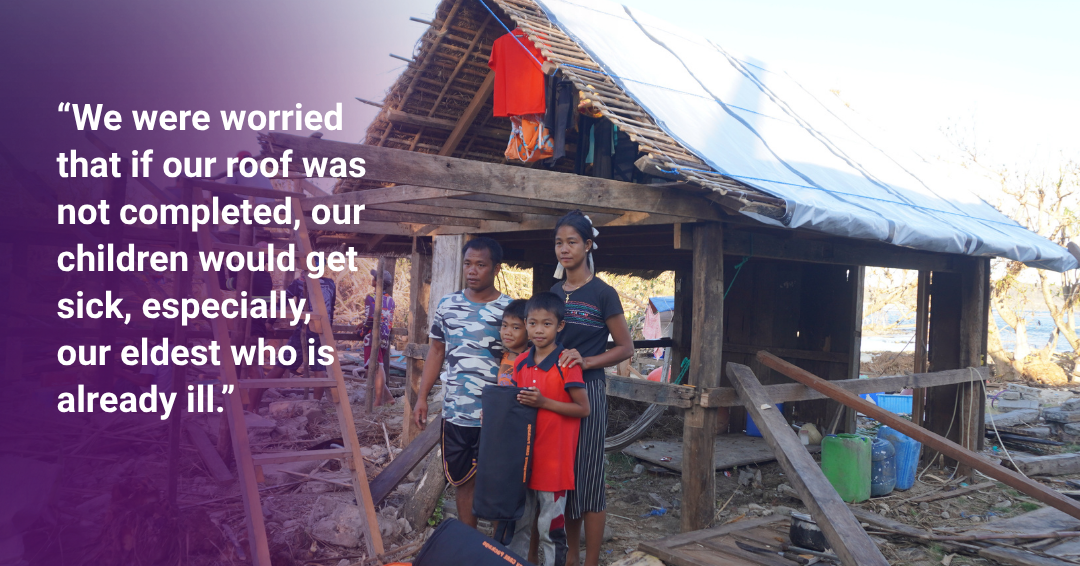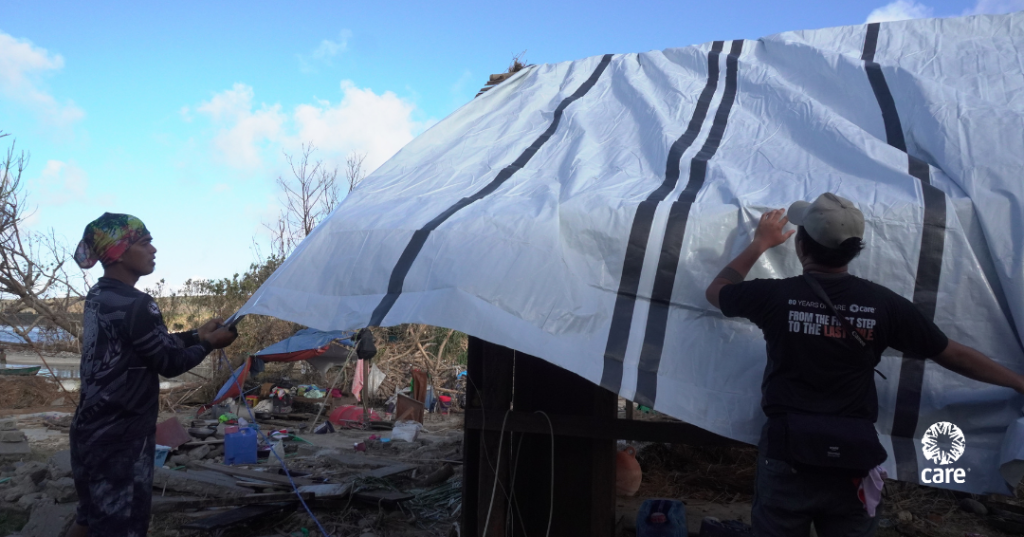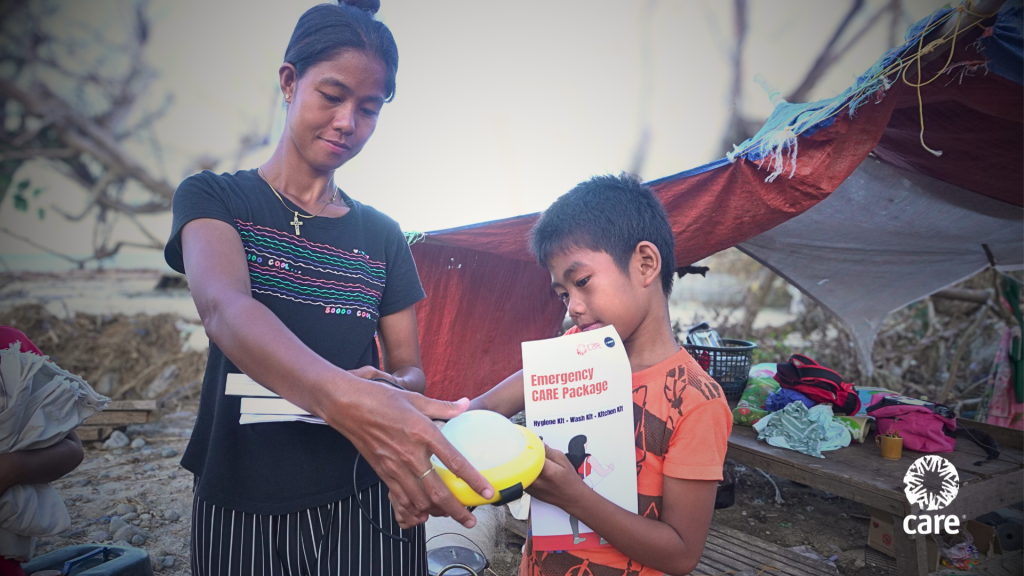An end to the nightly vigil against the rain

For Ronie and Zeny, the sound of water was the sound of home. For ten years, their house in the village of Dilam stood meters from the shore, and the rhythm of the waves was a constant presence. However, after Super Typhoon Nando swept their life away, the sound of rain became a source of nightly dread.
Their home was gone, replaced by a ruin of wood and debris. Refusing to surrender, they salvaged what they could to build a shelter for their two sons. They gathered scraps of wood and assembled a frame and walls. But they faced a challenge: the cogon grass used for roofing had been destroyed by the typhoon. Their new roof was only half-complete, a shield that could not protect them.
The nightly vigil began. When the frequent rains fell, the family would huddle in the one dry corner of the shelter. They would sit in the damp darkness and wait for the downpour to stop so they could sleep again.
Relief arrived in the form of the Emergency CARE Package (ECP). The 22-kilogram package contained 39 essential items, but for the couple, one stood out: a wide, fire-retardant tarpaulin sheet. It was the answer to their problem.

They worked to stretch the sheet over the gap in their roof and secure it against the wind. That night, as rain began to fall, the sound was different. It was the patter on a secure roof. For the first time since the typhoon, the family did not have to move. They remained on their mats, warm and dry. Their nightly vigil against the rain was over.
“We were worried that if our roof was not completed, our children would get sick, especially, our eldest who is already ill”, Ronie shared.
With their fear conquered, they could look to the future. The tarpaulin provided a crucial, temporary fix; using cash assistance from the government, they now plan to buy galvanized iron (GI) sheets to build a more permanent roof. The vigil had ended, allowing them to shift their focus from surviving the night to rebuilding their days.
The ECP also provided a solar lamp, a cooking stove, and hygiene items. Zeny knew the lamp was vital. “It means our children can still sit down and study their lessons at night,” she said. The vigil had ended, allowing the family to move from surviving the night to rebuilding their days.

Ronie and Zeny’s family was one of 250 households to receive this support. CARE provided the Emergency CARE Packages to Dilam, one of the most affected communities on the island. These items help families reinforce their living spaces and meet their immediate needs, restoring a sense of safety and dignity.
CARE’s work in the wider municipality of Calayan demonstrates a commitment to stand with the hardest-to-reach communities as they begin to rebuild. As we scale up our emergency response to assist multiple communities in crisis, Emergency CARE Packages were also provided to another 250 families in last-mile communities in Cebu affected by the recent 6.9 magnitude earthquake.

